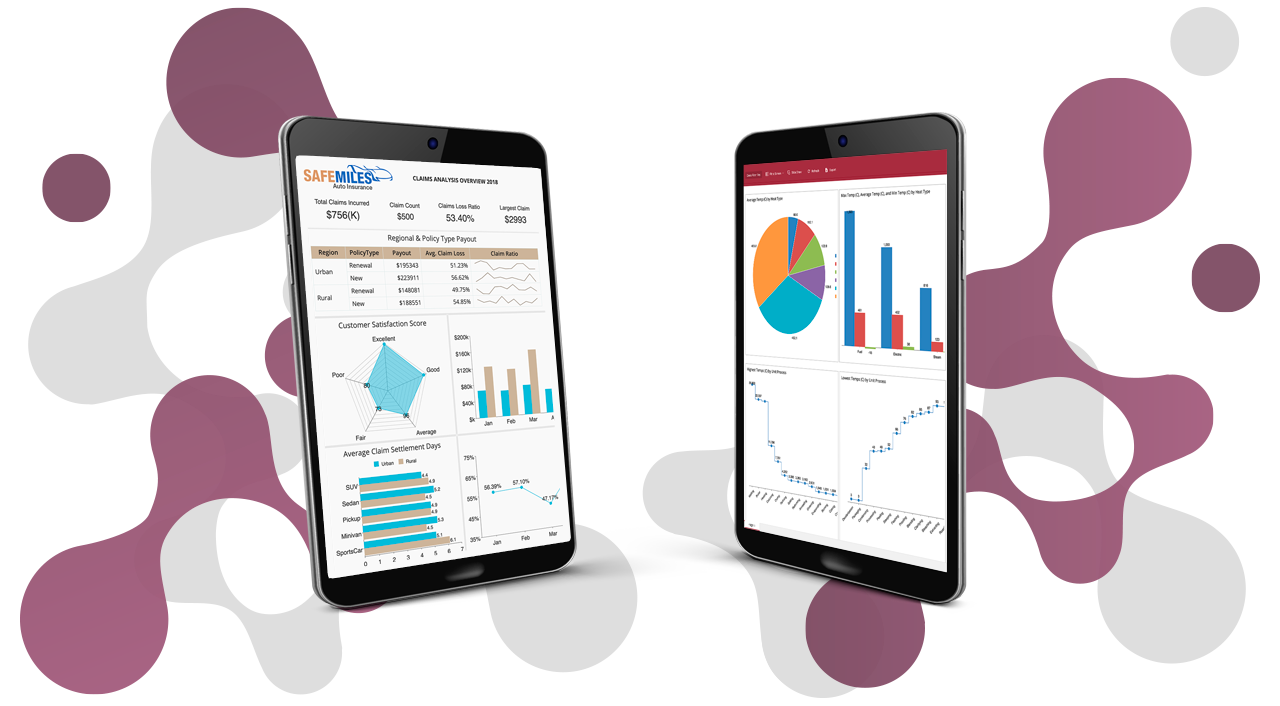Ad Hoc vs. Canned Reports
Traditional BI reports, or canned reports, are preformatted, print-ready reports created by IT, data managers, or analysts to answer a specific business question.
For example, a canned report can show a company’s revenue and whether it is lower or higher than expected. Frequently, a canned report will answer one question; however, many times one question leads to others.
Often, when users see the data within the canned report, a deeper analysis is required. An ad hoc report can be used to drill-down on data to understand why the revenue is lower or higher than expected.
The use of canned reports can impose a heavy burden on IT. A user must send a request to an IT member responsible for maintaining BI tools.
Ad hoc reporting is a business intelligence process where non-technical end-users can generate BI reports without the need from IT. Ad hoc reporting is a component of BI that helps users make data-driven decisions more accurately. Ad hoc reporting enables end-users to ask their own questions and create their own reports. The reports can help readers visualize data, which is essential for obtaining actionable answers to their questions.
What Industries Benefit from Ad Hoc Reporting?
Ad hoc report utilization can improve end-users analytical capabilities in many ways. Every industry from education, healthcare, finance, manufacturing, insurance, retail (and more) can benefit from a deeper understanding of their data.
Let's take a look at several industry use-case specifics.

Ad Hoc Reporting for Enterprises
Executives can use ad hoc reporting tools to obtain visibility over their organization, including its processes and workforce. They can also track their organization's progress towards their business goals and reallocate resources according to mission priorities.
Sales teams can identify problems and present their solutions to clients with ad hoc reports. For example, salespeople for wealth management firms often need to present performance metrics for a client's investment options.
An ad hoc reporting tool with an interactive dashboard can fulfill this requirement far more easily than a static spreadsheet.
Ad hoc reports can help identify the people and places with the most significant demand for a product by targeting specific demographic groups and geographic locations for the current time period. Customer support teams can also monitor trends in customer satisfaction surveys with ad hoc reports.
This capability allows these departments to identify the team members who provide customers with the best experiences and view support volume, recurring issues, recurring ticket openers, and service level agreements (SLAs).
Ad hoc reports can provide project managers with a better understanding of their projects. They allow managers to monitor their projects' compliance with budget and time constraints, along with equipment availability, performance, and quality. Ad hoc reports also enable project managers to identify process bottlenecks.
System admins can determine which portals, controls, and visualizations end-users can see.
Ad Hoc Reporting in Healthcare
Ad hoc analysis is proving particularly useful in healthcare, where professionals rarely know programming languages or build visual aids. However, a doctor can quickly generate a laboratory report with ad hoc reporting.
Healthcare ad hoc reports can include:
- Data prioritization
- Lab test results
- Patient satisfaction
- Seasonal visit volume
- Patient summaries
All of which are essential for improving preventative medicine and diagnostic procedures.
Ad Hoc Reports in the Finance Industry
The financial sector is also making effective use of ad hoc reports. This industry routinely deals with facts and figures, which relies heavily on reporting capabilities. Ad hoc reports help financial analysts drill-down to specific segments of data, allowing them to spot trends and maximize their return on investment (ROI).
Benefits of ad hoc reports in the financial sector may include:
- Improved security
- Enhanced regulatory compliance
- Complex mathematical computations are easily visualized

Ad Hoc Reporting in Retail, Marketing, and eCommerce
Ad hoc reports are primarily used in the retail sector for loss prevention. A store-specific report for a specific loss area like employee theft or shoplifting can track inventories and identify trends that can dramatically reduce losses.
Ad hoc reports can also help retailers with customer identification and retention, inventory planning, and personalizing customer service.
Ad Hoc Reports in Technology
Users in the technology industry create ad hoc reports to answer many different business and IT questions. IT administrators can monitor network health, visualizing bandwidth tests, compare historical upload/download speeds, or identify problem points in the enterprise network.
IT Project Managers may need to generate on-demand reports to guide projects through the conceptual development phase, using data to drive SWOT analyses or track execution resources like budget and time.
Ad Hoc Reports for the Manufacturing Industry
Production floor managers and executives in the manufacturing industry use ad hoc reporting to utilize data to answer their sales, inventory, and supply tracking questions. Specifically, ad hoc reports visualize inventory tracking to check fluctuations in supply or demand. Manufacturing managers can use the report outcomes to adjust material accordingly to ensure optimal manufacturing location efficiency.
Ad hoc reports also help determine optimal warehouse configurations, determine profit contributions by segment and customer, and uncover the risks and rewards of taking on new contracts.
Ad Hoc Reporting - Design Best Practices
Ad hoc reporting benefits do depend on the report design quality, even when the data itself is entirely accurate. Users need to follow several best practices to ensure the ad hoc reports they generate are as useful as possible.
Assuming the use of a modern reporting tool, some of the many best practices for ad hoc reporting include:
- Identifying the question
- Keeping reports simple
- Consider the layout
- Make aggregate data points easily accessible
- Maintain design consistency
These practices should eventually become second nature for anyone who designs ad hoc reports regularly.

Empower Teams with Self-service BI
Provide your team with a unified, enterprise-level, self-service data analysis and decision support platform. Wyn Enterprise is a web-based BI and data analytics platform that provides greater insight into your data.
Wyn offers built-in tools for report and dashboard creation, data governance, security integration, embedded BI, automated document distribution, and a business-user friendly interface for self-service business intelligence.
Wyn's easy-to-use designers allow non-technical business users to build interactive dashboards with drill-down and cross-filter functionality quickly.
Users can independently create ad-hoc reports to visualize data and obtain meaningful insights from their reports.





























